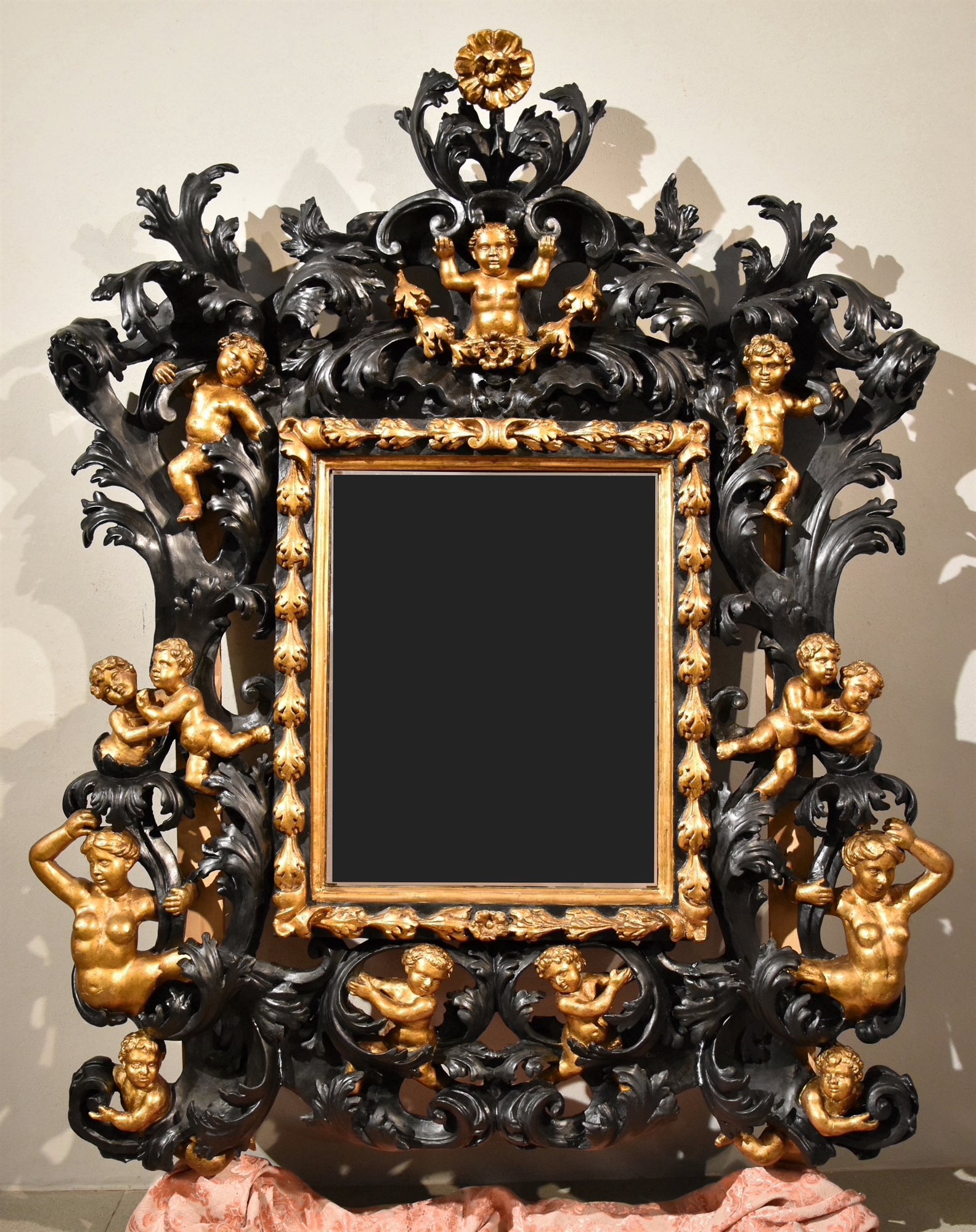Superba specchiera, di dimensioni importanti, riccamente scolpita, laccata e dorata
Attribuita ad Andrea Brustolon (Belluno 1662 - 1732)
Superb mirror characterized by a rich carving with acanthus scrolls
Attributed to the workshop of the cabinetmaker Andrea Brustolon (Belluno 1662 - 1732)
Venice
Louis XIV period, late 17th - early 18th century
Finely carved, lacquered and gilded wood
Mercury silver-plated mirror
Maximum dimensions: 170 x 138 cm.
It is a prestigious parade mirror, of important dimensions, richly carved, gilded and lacquered, which represents a notable example of the typical decorative repertoire of Louis XIV. It is made with elements of particular sumptuousness for the resolution of the carving, entering the late Baroque period as a rare expression of the whimsical Venetian cabinet-making of the late seventeenth century or the very early eighteenth century.
This work of art, virtuosic in its architectural design and of the highest artistic value, can give further importance and elegance to a prestigious environment, intended for those who want to own an object that is not only precious, but one of a kind.
Due to its size, quality of workmanship and state of conservation, it therefore qualifies as an extremely rare work of art.
The gilding in contrast with the black lacquer gives a highly suggestive sheen to the frame.
The density of the decoration is a characteristic element of the evolution of the Venetian Baroque style in the second half of the seventeenth century, as an emblem of pomp and power.
Going into the details of its origin, due to the quality and rarity of the structure and the extremely refined execution, the furniture fits easily into the production of the Venetian cabinetmaker Andrea Brustolon.
From the structural point of view, the carving is made up of large and fleshy volutes of acanthus leaves, from which floating putti peep out that seem to cling to the luxuriant racemes and two important female figures, probably two nereids, with bare breasts, according to a classic model that is found in many designs prepared by Brustolon.
The stylistic emphasis placed by the carver in modeling the continuous transformation of the decorative motifs of the frame appears to be a sure sign of the hand of the illustrious Venetian master.
This type of acanthus scrollwork, boldly carved, was produced in various centers in Italy between the end of the seventeenth and the first half of the eighteenth century, from Rome, the cradle of the Baroque thanks to the school of Gian Lorenzo Bernini, up to arrive in Veneto, precisely with the works of the Brustolon workshop. In fact, in 1679 a brief stay of Andrea Brustolon in Rome is documented, where he is "naturally" influenced by the figure of the great Bernini,
Returning to Venice, he imported Bernini's poetics, albeit with a personal and original interpretation, counting among his clients the most influential noble families of the lagoon city, including the Correr, Pisani and Venier.
The work, like any other object, is accompanied by an expertise of photographic authenticity in accordance with the law (FIMA).
We personally take care of the professional packaging and organize the transport of the purchased works.
For any information, do not hesitate to contact us.


